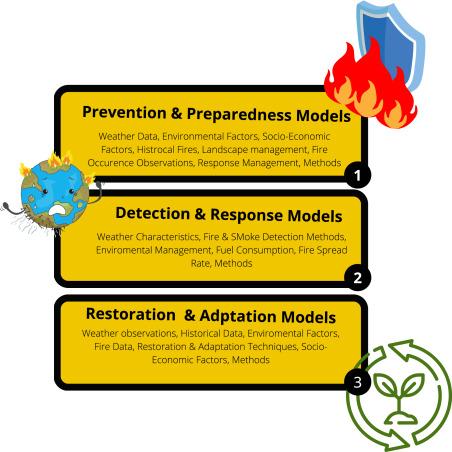In late March 2025, wildfires erupted in the Carolinas, leading to evacuations and prompting state of emergency declarations. In North Carolina’s Polk County, two major wildfires, Black Cove and Deep Woods, each exceeding 2,000 acres, were uncontained as of March 23. The Black Cove fire, ignited by a downed power line on March 19, had burned over 1,239 acres, while the Deep Woods fire had consumed approximately 1,713 acres. (keyt.com)
These fires, fueled by dry conditions and high winds, led to mandatory evacuations in affected areas. A Code Red air quality alert was issued, indicating that prolonged exposure to the smoke could be unhealthy for everyone. (deq.nc.gov) The North Carolina Forest Service, along with over 450 firefighters from various departments, worked tirelessly to contain the blazes. (wunc.org)
In South Carolina, the Table Rock fire in Pickens County ignited on March 21, rapidly spreading over 1,300 acres by March 23. Governor Henry McMaster declared a state of emergency to mobilize resources swiftly. Another fire, the Persimmon Ridge fire, started on March 22 in the Mountain Bridge Wilderness area, growing to over 800 acres by March 23. Both fires remained uncontained as of March 23. (apnews.com)
The wildfires were exacerbated by weeks of below-average rainfall, with much of Polk County experiencing moderate drought conditions. Bob Oravec, a meteorologist with the Weather Prediction Center, noted that such conditions are common in spring, stating, "Right around when the leaves start coming up on the trees, right around green-up, there’s a lot of dry fuels on the ground, so it’s easy for them to burn." (wunc.org)
In response to the heightened fire risk, the North Carolina Forest Service implemented a statewide burn ban, prohibiting all open burning in the affected counties. (wunc.org) Similarly, South Carolina enforced a statewide burning ban, with residents warned against outdoor fires. (apnews.com)
As of March 23, the Black Cove and Deep Woods fires in North Carolina were zero percent contained, while the Fish Hook fire was 50% contained. In South Carolina, the Table Rock and Persimmon Ridge fires remained uncontained. Firefighters continued to battle the blazes, with lighter winds on March 24 aiding their efforts. (apnews.com)
Residents in affected areas were urged to stay informed through official channels and adhere to evacuation orders and safety guidelines. The situation remained dynamic, with ongoing efforts to contain the fires and mitigate their impact on communities and the environment.
Wildfires Prompt Evacuations and State of Emergency in the Carolinas:
- Wildfires prompt evacuation in the Carolinas as New Jersey crews battle their own blaze
- Crews battle wildfires in North and South Carolina amid dry conditions and gusty winds
- Lighter winds help crews fighting wildfires in South and North Carolina
What areas are most affected by the wildfires in the Carolinas?
Frequently Asked Questions (FAQ)
- What caused the wildfires in the Carolinas in March 2025?
- The wildfires were primarily ignited by dry conditions and high winds. In North Carolina’s Polk County,the Black Cove fire was sparked by a downed power line on March 19,while the Deep woods fire’s exact cause remains under inquiry. In South Carolina, the Table Rock fire in Pickens county ignited on March 21, rapidly spreading over 1,300 acres by March 23. Governor Henry McMaster declared a state of emergency to mobilize resources swiftly. Another fire,the Persimmon Ridge fire,started on March 22 in the Mountain Bridge Wilderness area,growing to over 800 acres by March 23. both fires remained uncontained as of March 23.
- How many acres have been affected by the wildfires?
- As of March 23,the Black Cove fire in North Carolina had burned over 1,239 acres,and the Deep Woods fire had consumed approximately 1,713 acres. In South Carolina,the Table Rock fire had spread over 1,300 acres,and the Persimmon Ridge fire had grown to over 800 acres.
- What measures have been taken to combat the wildfires?
- firefighters from various departments, including the North Carolina Forest Service, have been working tirelessly to contain the blazes. In South Carolina, Governor Henry McMaster declared a state of emergency to mobilize resources swiftly. Both states have implemented statewide burn bans, prohibiting all open burning in the affected counties.
- What is the current containment status of the fires?
- As of March 23, the Black Cove and Deep Woods fires in North Carolina were zero percent contained, while the fish Hook fire was 50% contained. In south Carolina,the Table Rock and Persimmon ridge fires remained uncontained. Firefighters continued to battle the blazes, with lighter winds on March 24 aiding their efforts.
- What health advisories have been issued due to the wildfires?
- A Code Red air quality alert was issued, indicating that prolonged exposure to the smoke could be unhealthy for everyone. Residents in affected areas were urged to stay informed through official channels and adhere to evacuation orders and safety guidelines.
- How can residents stay informed about the wildfires?
- Residents are encouraged to stay informed through official channels, including local news outlets and government websites. Adhering to evacuation orders and safety guidelines is crucial for personal safety.

